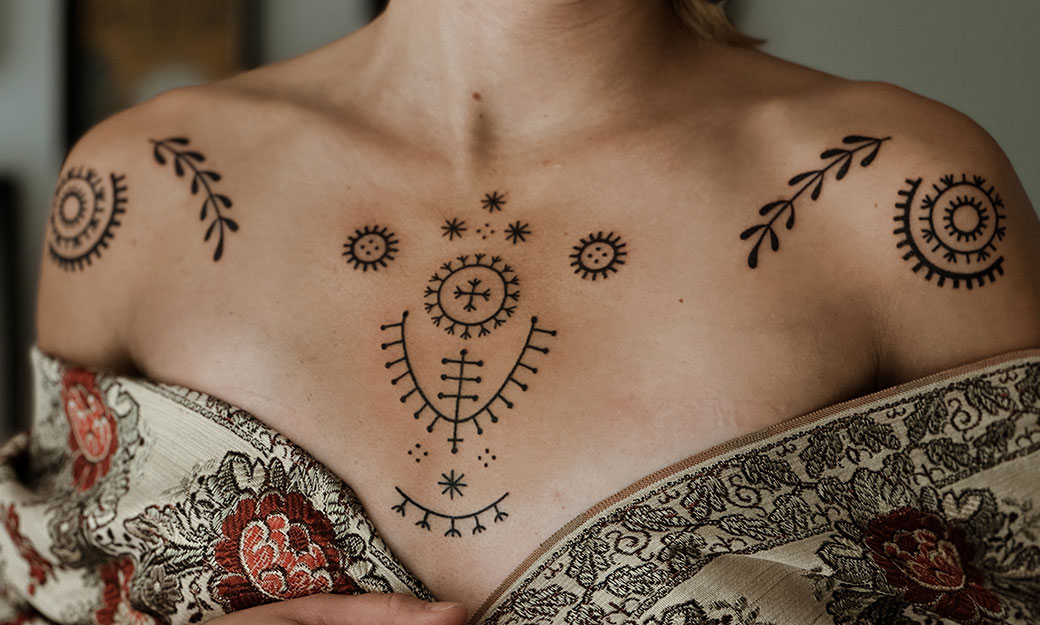Throughout history, the form, meaning, and purpose of tattoos have evolved. While some have chosen to tattoo themselves for protection or to mark identity, faith, and rites of passage, others have been forced to bear permanent symbols as stigma or punishment.
From the earliest evidence of tattoos on the Iceman Ötzi, to Christian pilgrims tattooing themselves in Jerusalem, and tattooed women in North Africa, the Middle East, and the Balkans, the exhibition explores the history and varied meanings of tattooing in the Mediterranean region.

In Croatia and Bosnia, it was once common for women to have tattoos, but the tradition faded as they were seen as primitive in communist Yugoslavia. Mélissa Pizović (born 1991), a tattoo artist based in Paris, keeps the tradition alive using a hand-poking technique without electric machines. Photo: Mélissa Pizović.
Images (from left):
See the journey from sacred traditions to modern artistic expression and discover how ink unites people, preserves cultural heritage, and transforms bodies into living artworks.
The ancient artefacts will be displayed alongside contemporary photography showcasing tattoo traditions from different cultures around the Mediterranean. A new photo series features people in Sweden with tattoos that connect to personal stories, places, and cultures from the Mediterranean region.
Tattoo – Stories in Ink from the Mediterranean opens Friday, June 13, 2025 and will be on view until June 14, 2026, at the Museum of Mediterranean and Near Eastern Antiquities. Tattoo is curated by Luisa Gnecchi Ruscone and Guido Guerzoni, and produced by 24 Ore Cultura for the Museo delle Culture in Milan, Italy.
Header picture: Captain George Costentenus, portrait by Carl Heitzmann. Property of Hagströmerbiblioteket, Karolinska Institutet.